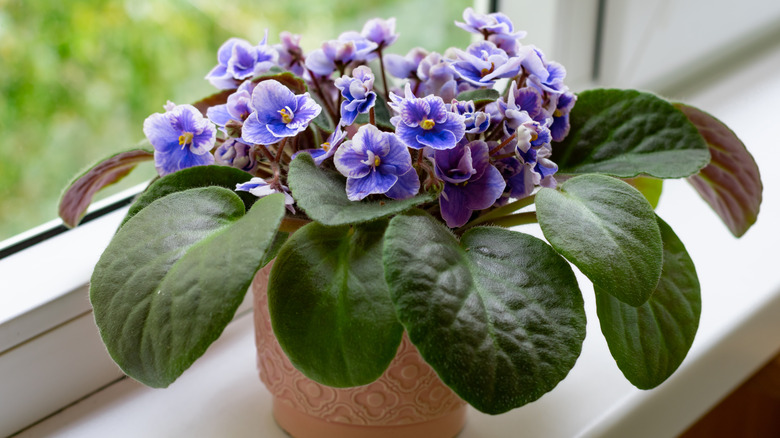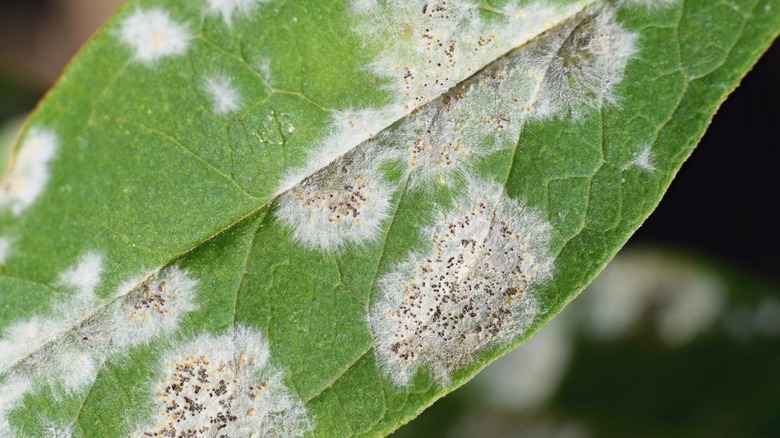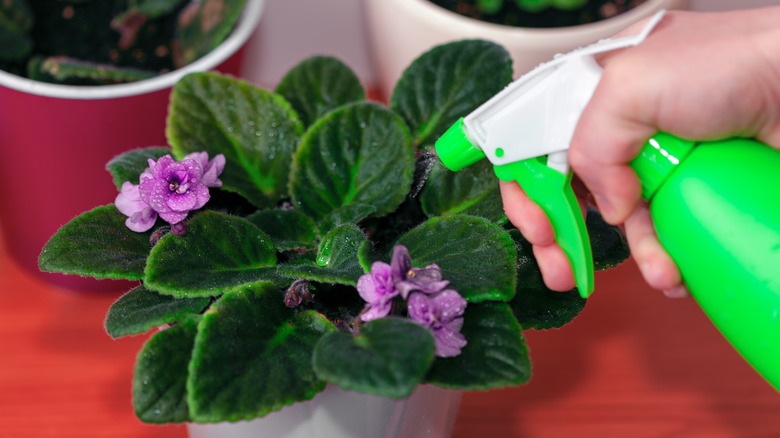What's The Best Way To Treat Powdery Mildew On African Violets?
African violets are a houseplant known for their delicate flowers. They bloom in purple, blue, or white, with fuzzy dark green leaves below vibrant petals. This houseplant is picky, so caring for it takes more effort than with other species. Light is essential to stimulate blooms and keep African violets growing steadily. They prefer bright, indirect sun according to Almanac. However, providing them with too much direct sun can burn their foliage.
Water is where African violets really start getting picky. They prefer room temperature water; anything different will stain the leaves. Their soil should always be lightly moist, so water them about once a week. A well-draining potting mix is also essential to prevent root rot.
One big problem with African violets is they are highly susceptible to fungal diseases. They thrive in a humid environment, but such conditions also create a breeding ground for fungal infections to grow on their leaves and flowers. One of these is powdery mildew.
How to tell if your african violets have powdery mildew
Powdery mildew is a fungus that spreads through spores like mold. They are transmitted between nearby plants via the air and will take over all of your houseplants if you don't take immediate action. This disease won't kill your plants, but it will infect the leaves, stems, buds, and flowers. Once a spore lands on your African violets' foliage, it begins growing. As it takes nutrients from your plant, the leaves turn yellow, then brown, and then they drop. Baby Violets explains that new growth is the most susceptible to powdery mildew.
You can spot this fungal disease by looking for powdery white patches that look like flour. Since African violets already have fuzzy leaves, it may be hard to look for that characteristic of mildew. These patches can grow to cover an entire leaf, making it look like it was dusted with powdered sugar. African violets need a humid environment, making them more likely to get powdery mildew. A lack of proper air circulation is another reason your plant may become infected.
How to get rid of powdery mildew
When your African violets contract powdery mildew, you must treat them as soon as possible. First, move the infected plants away from healthy ones so the spores don't infect them. Then prune any infected foliage with a pair of disinfected shears. Finally, ensure you wash the shears once you're done to prevent spreading the disease to healthy plants.
How you dispose of the infected foliage also matters. It should be thrown in the garbage and never in a compost pile. The powdery mildew spores will live in the compost and transfer the disease to any plants you use the fertilizer on.
You can use a fungicide to treat and prevent powdery mildew. The Connecticut Agricultural Experiment Station recommends using a sulfur-based fungicide. Dilute it according to the package and spray it liberally over the entire plant. You'll need to apply it regularly to ensure the fungus is gone. Another option is to mix your own treatment. For example, the African Violet Association of Australia suggests using a single teaspoon of baking soda with a few drops of liquid soap to one liter of water. Add it to a spray bottle and apply it like the commercial fungicide. Both of these treatments work by changing the pH of the leaf, which causes the fungus to die.


